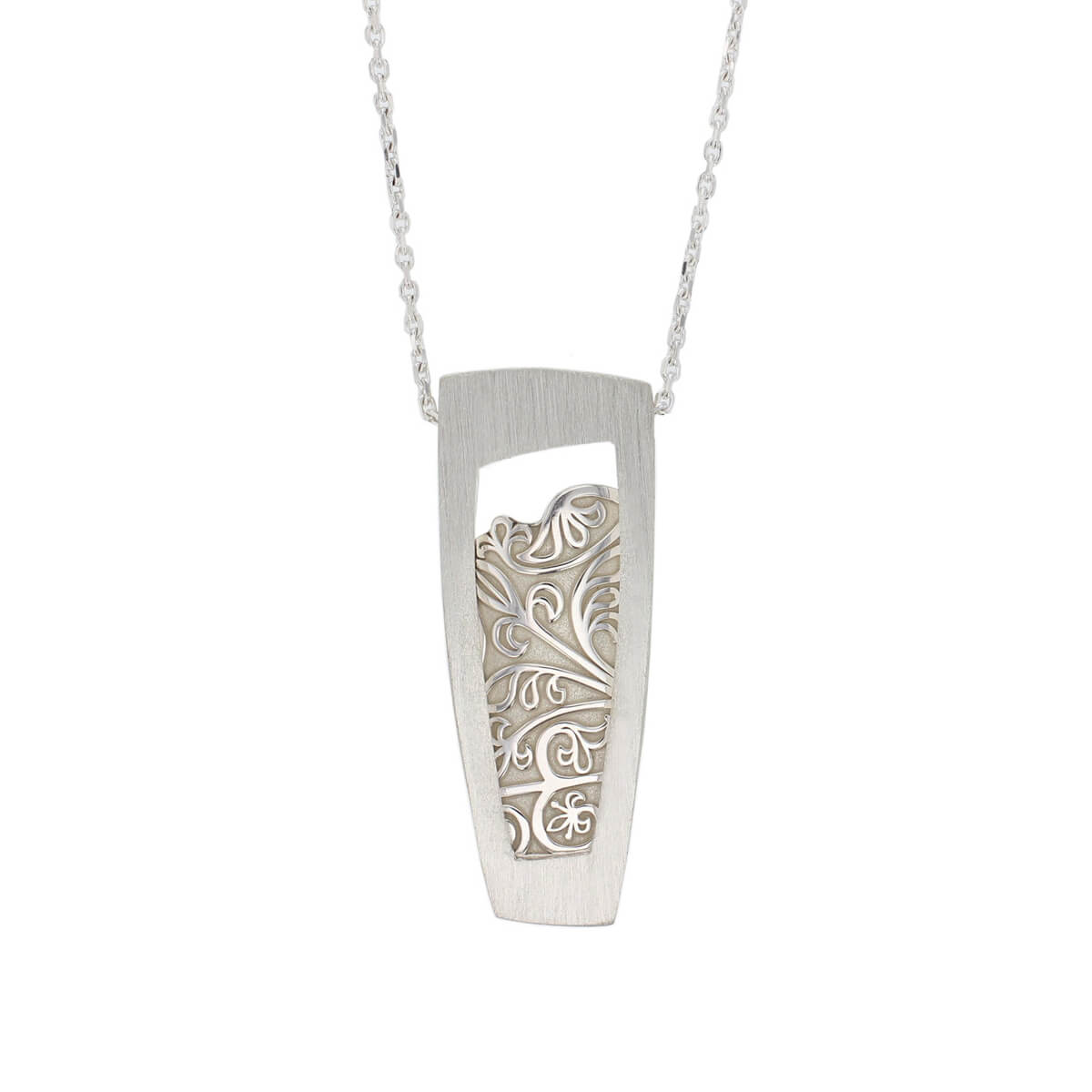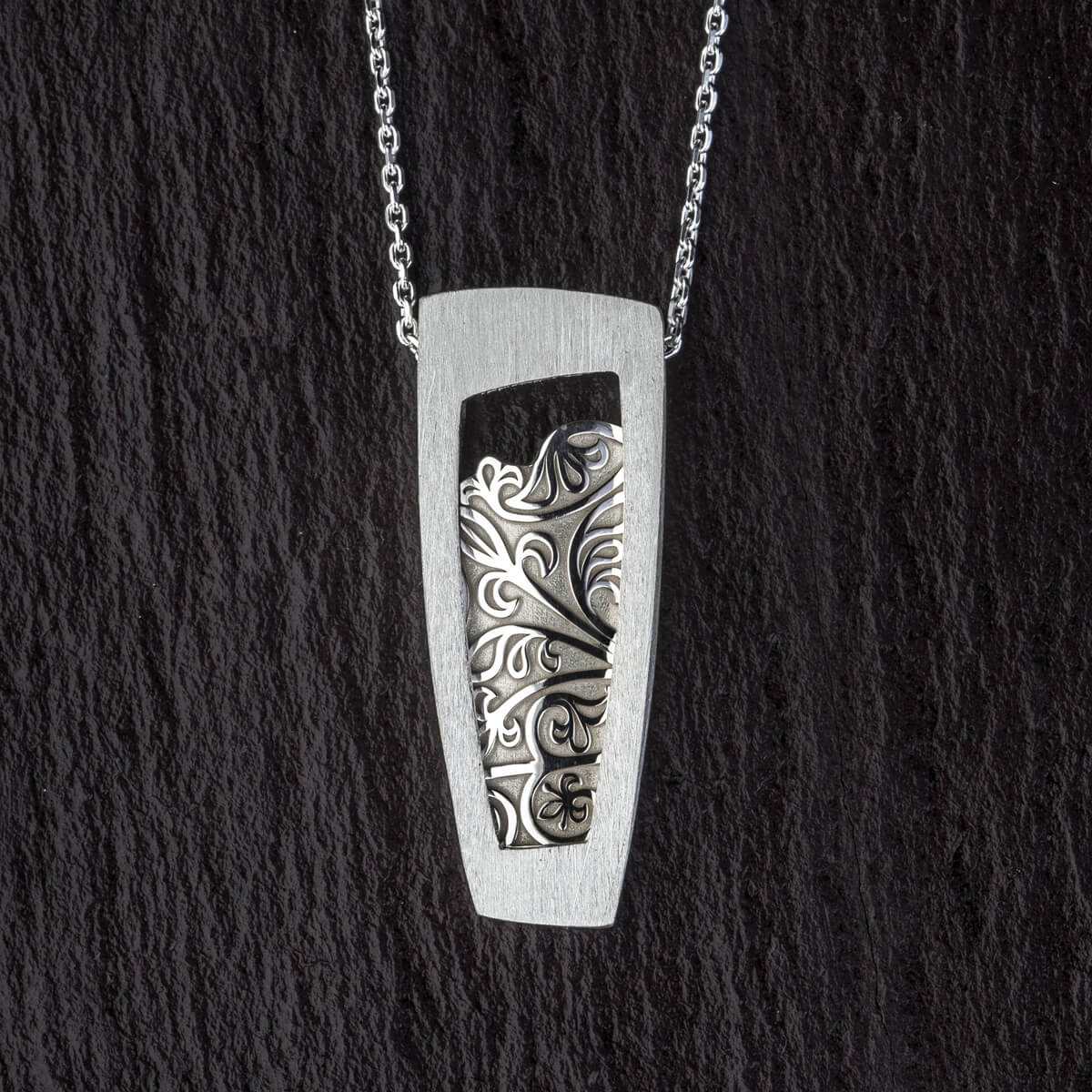Galloglas Fleur Pendant
Metal: Sterling silver
Size: 36mm long by 14mm wide.
Ref: 4016040
£95
-
Description
This Faller pendant is inspired by the floral detail at the bottom of the Galloglas Stone. The Fleur-de-lys, (French: “lily flower”) motif is associated with both the Virgin Mary and with the Holy Trinity. The pendant is made in sterling silver with a brush-finished outer chunky frame and polished floral centre. It is supplied with a sterling silver chain which is available in four lengths. The complete necklace is packaged in its branded Faller box which also contains our Galloglas descriptive leaflet.

Galloglas Stone
About the Galloglas Stone
This early medieval gravestone is located in the church ruin at Clonca, close to the Bodan Cross, 3km south of Culdaff, in Inishowen, Co. Donegal. Carved from dark limestone it measures 185cm tall by 55cm wide and 14cm deep.
The Scots Gaelic inscription in Lombardic lettering reads…. “Magnus mac Orristin ia fo triat seo” (Magnus Mac Orristin of the Isles under this mound). “Fergus mac Allan do rini in clach sa” (Fergus Mac Allan made this stone).
The curved stick (known as a camán) on the slab reminds us that primitive versions of hurley were played in Ireland in ancient times. Modern hurley, shinty (Scottish), and hockey have all evolved from this primitive game. A cast of this unique monument is on display in the GAA Museum, Croke Park, Dublin.
The two-handed Scottish Claymore was commonly used by Gallóglaich, (Galloglas or Gallowglass) warriors. They were an elite class of mercenaries from the mixed Scottish-Viking population of the Hebrides and parts of western Scotland. From the mid 12th century onwards they were recruited by Irish chiefs to counteract the heavily armored and mounted knights of the English invaders. Similar in language and customs, the Galloglas integrated easily with the locals and many settled in Ireland. In time their ranks became filled with native Irish men. Noted for their courage and fierceness in battle they enabled the Gaelic culture to withstand the English incursion until the end of the 16th century when the introduction of muskets and cannons finally defeated them.
Irish Galloglas clans included Mac Sweeney clan (MacSuibhnes) originally from Argyll, Mac Cába (McCabe) from Aran, MacDomhnaill (MacDonald / McDonnell) from Kintyre and Islay, Mac Dubhghaill (Macdougall / McDowell from Lorne, Mac Ruairí (MacRory) from Bute, Mac Síthigh (MacSheehy / Sheehy) from Kintyre, and Mac Aodha (McCoy) from Kintyre.
For more local information on this monument go to Sean Beattie’s Article.



